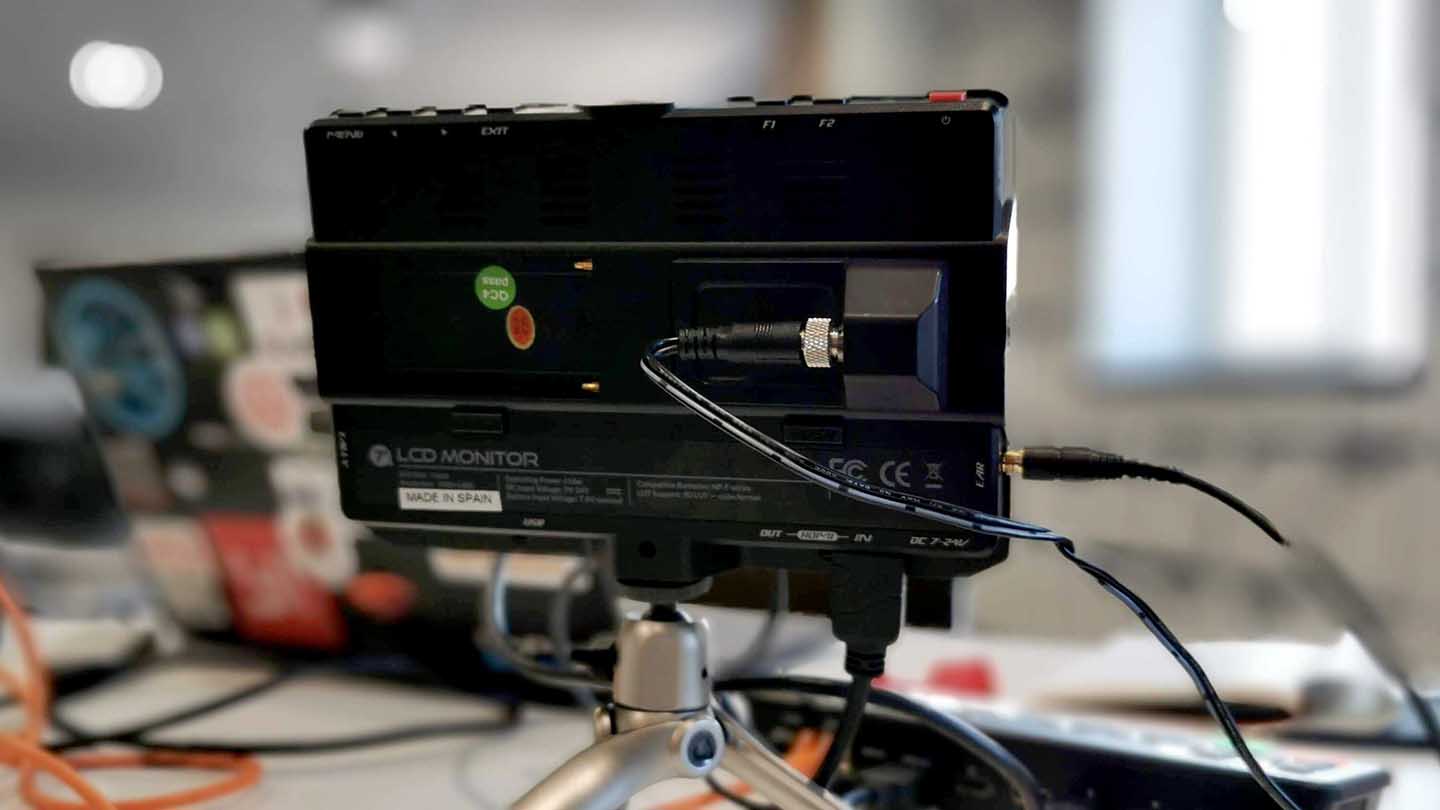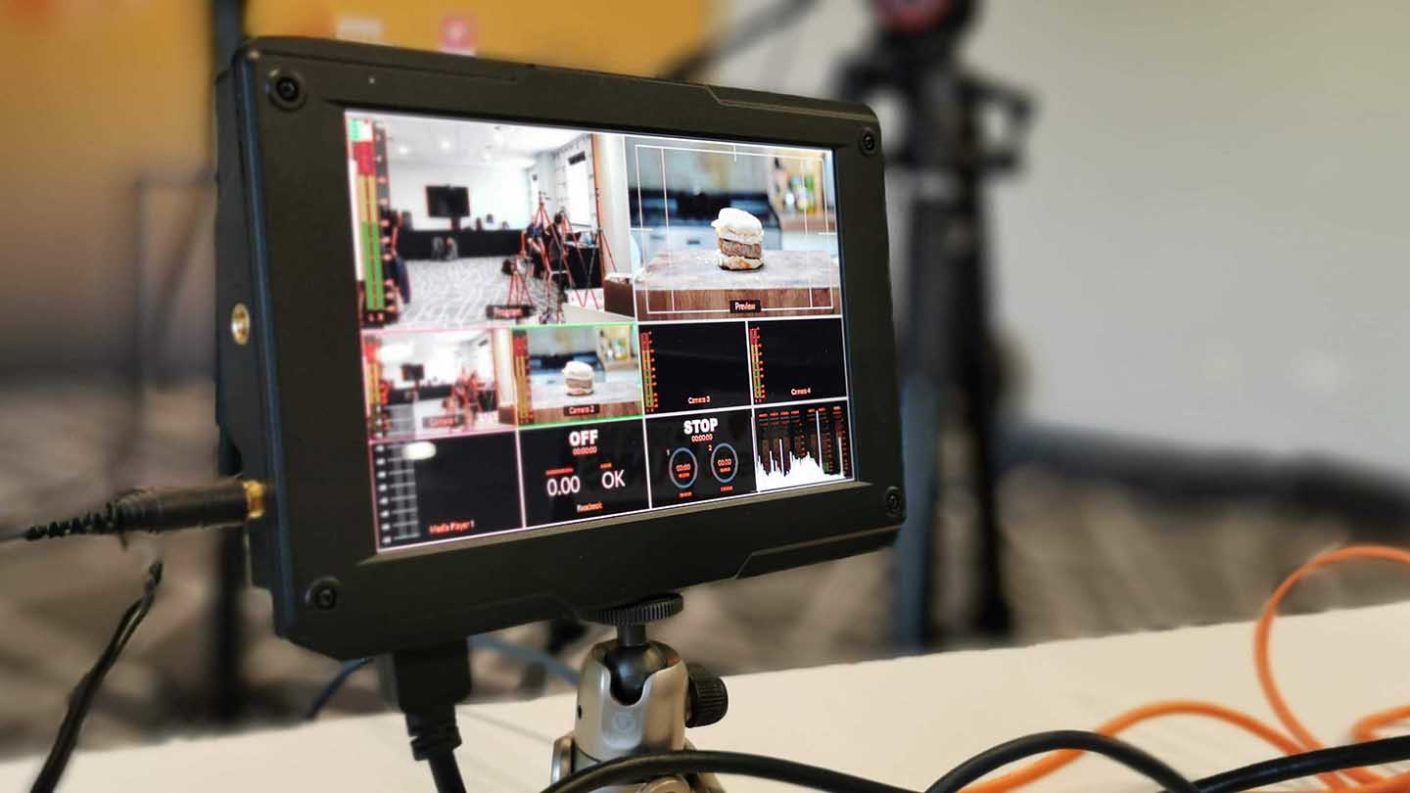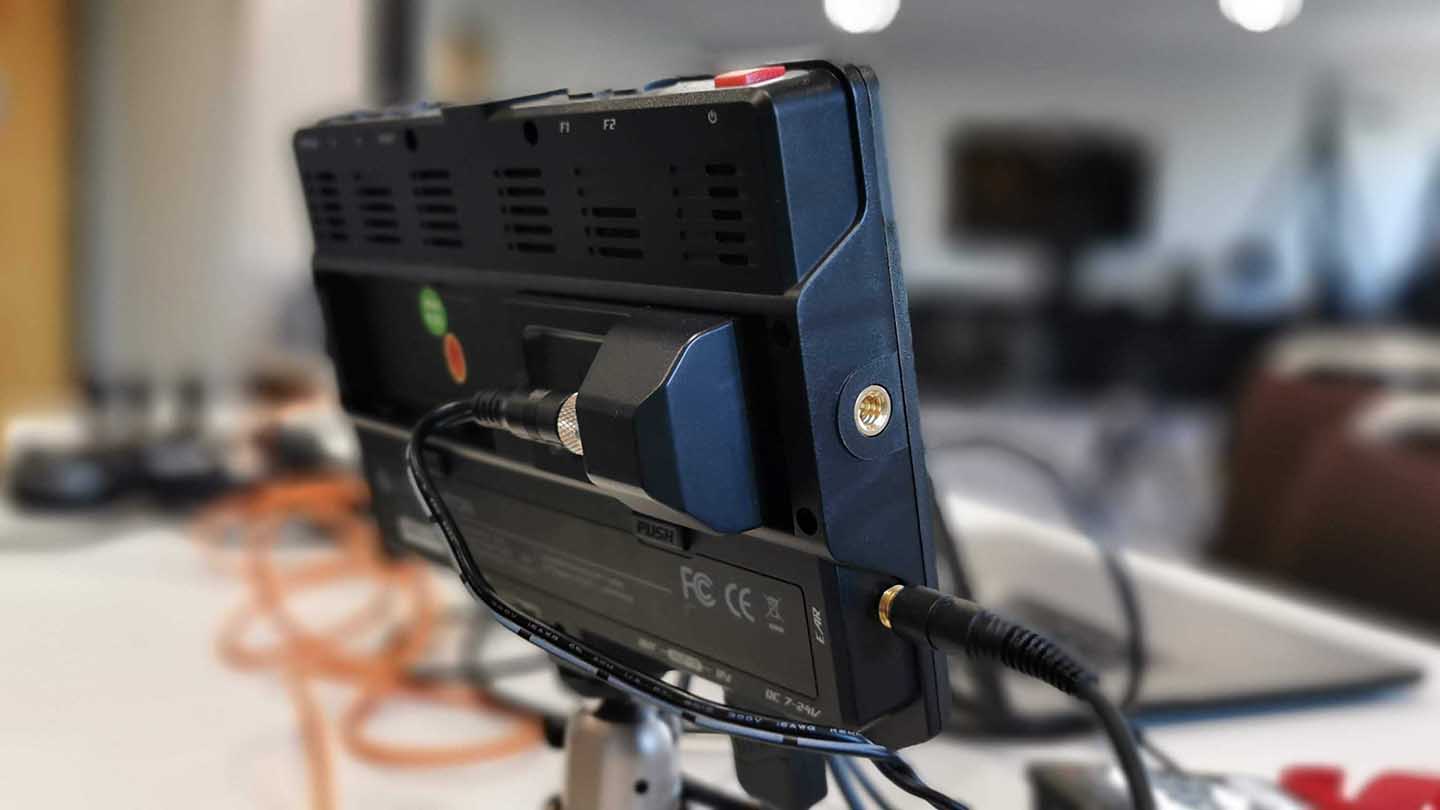Most monitors take a little while to boot up, and the pnbe takes around five seconds which in the scheme of things isn’t at all bad.
In this test, I used the monitor in two scenarios, first as a straight field monitor for my Sony A7 III and in the other connected to an ATEM Mini Pro to check for a multi-camera and media device setup.

Starting with the single-camera setup, the weight of the monitor was a definite benefit, the lightweight design added weight but not so much to affect the handling.
The 7-inch size, although it sounds small, is ideal for this size of mirrorless rig and keeps portability in check.
Getting started is easy enough, mount the battery, plug in the camera through HDMI and you’re ready to go. There’s an additional HDMI out that you can output to a recorder.
One of the great features of the monitor is the ability to load in 3D LUTs so you can preview the style of the footage you’re shooting. Likewise, the HDR feature enables you to preview HDR capture or HLG for the A7 III.
The use of the monitor over that of the small screen on the back of the Sony is a major advantage on every level.
Using the focus peaking and exposure histogram are the two most common features that you tend to use with field monitors, at least when you get started. Here pnbe have ensured that these are already mapped to the two function keys making it easy enough to switch on and off as needed.
If you want to swap the function button allocation then there are options to do this within the menu system.
Additional overlays can be switched on by delving into the menu, and while the menu isn’t the most intuitive, and looks dated, it does the job.
On the monitor I’ve tested there’s a good selection of options, and if you take a step up, in both use and price, the next version does feature waveforms.
However, for those just starting the basic that are supplied are spot on.
Connected to Sony A7 III and the monitor was a major asset, the screen on the A7 is small and blows highlights easily, with the pnbe all that detail was clear to see.
Through the test, I did find that while the brightness is superb, tonal detail is lost at the brighter settings for the monitor. So while you can see whats going on in bright sunlight, important detail is lost. In these cases, using a sunshade is a far better idea than boosting the monitor’s brightness to max.
Overall, however, once you’ve tweaked the settings to suit your scene and style of shooting the monitor has all the usual benefits, including being able to load in those LUTs.
The second scenario that I used the monitor was as part of the ATEM Mini Pro setup.
Here I connected two Sony A7’s and two MacBook Pro’s, one to control the ATEM and the other as a video feed.
Switching the HDMI output to multi-screen the different feeds appeared on the small screen, again a little toning down of the brightness of the screen and all was set.
As the pnbe screen was being used effectively as a monitor, I initially switched off most of the on-screen info, but over the course of a multi-day event, I found that displaying the levels and peaking useful.
The ability to connect the screen into the battery or mains power was another huge benefit, although that external power source is an additional cost. I simply used the adapter from the ATOMOS Ninja V.







